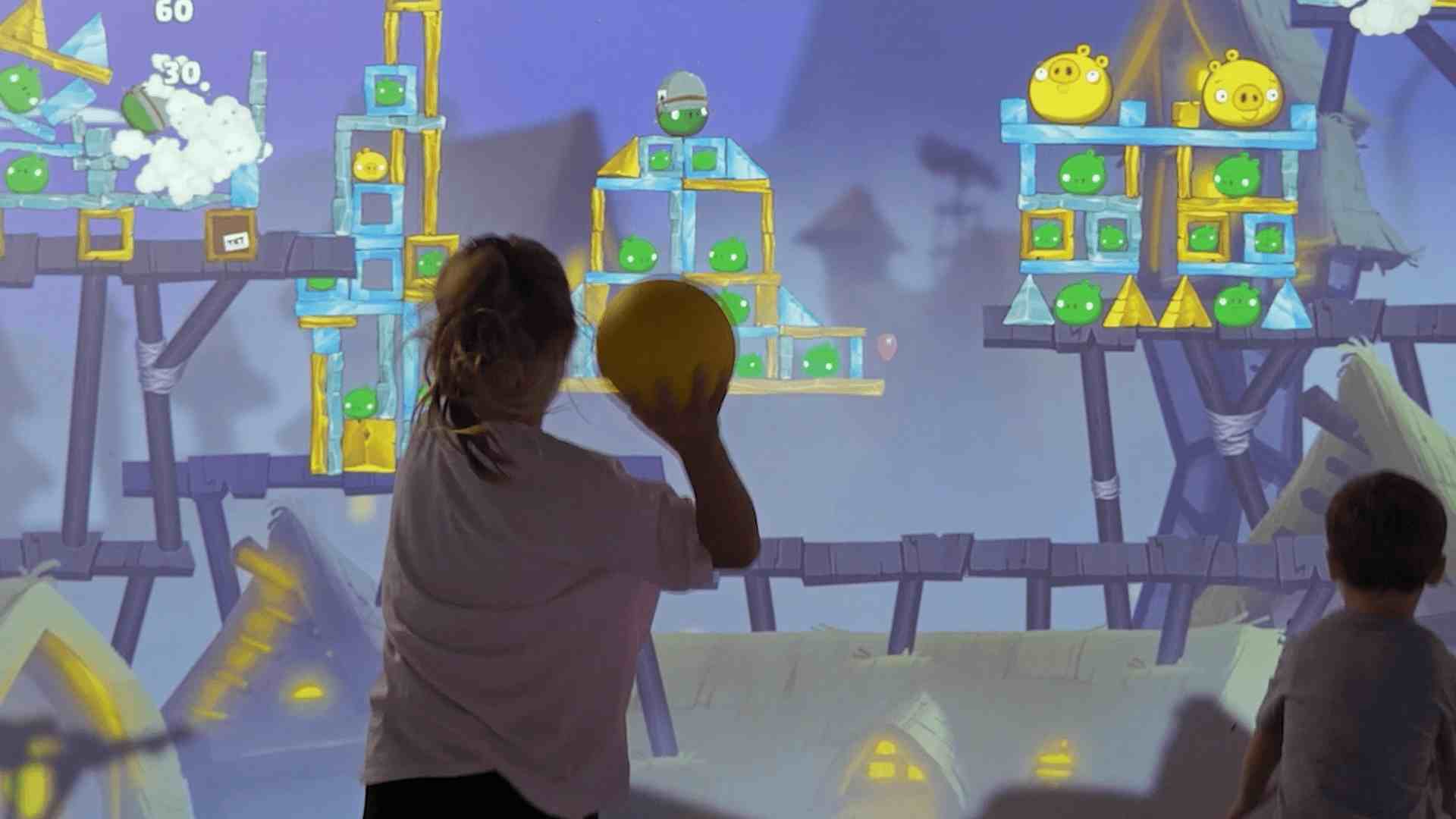Edutainment : Definition

At NeoXperiences, we see edutainment as a bridge between game and education, where immersive and interactive tools transform learning into a captivating and memorable experience.
Edutainment also known as edutainment pedagogy , is based on the idea that learning is more effective when it is associated with pleasure. By blending playful elements with educational content, this approach stimulates curiosity, reinforces commitment and encourages better knowledge retention. Used in a variety of contexts, edutainment often relies on innovative technologies such as digital or interactive devices to deliver dynamic and engaging experiences.
The different forms of edutainment today
Educational video games :
These include Minecraft, which stimulates collaborative learning, creativity and problem-solving.
Interactive videos :
In particular educational videos on platforms such as YouTube, Tiktok, Instagram but also with interactive documentaries where the user chooses their narrative path.
Digital platforms :
Duolingo for language learning, for example.
Non-digital forms :
Such as educational board games, educational shows or practical workshops.
The benefits of edutainment for learning
Strengthening learner commitment
In the face of digital distractions and declining concentration, edutainment is proving to be an effective solution. Playful elements (challenges, rewards, immersive stories) capture attention and make learning stimulating.
By combining interactivity, imagination and emotion, this approach engages learners over the long term, especially the younger generations who are used to fast-paced, immersive content. In this way, edutainment encourages prolonged concentration, combining pleasure and learning.
Clean the ocean helps to raise awareness among youngsters of the importance of preserving the oceans and marine animals. By joining forces, players must clean up the ocean and care for the animals. Realistic designs and eye-catching colours help players realise the importance of their mission and the positive impact their actions can have.
It’s an innovative way of changing the way we learn!
Improved memory and retention of information
Visual and interactive media stimulate memory by making information more concrete and engaging.
Animations, games and simulations captivate attention and encourage better assimilation of knowledge, whether for children or adults. This approach boosts retention by combining learning et fun expérience.
Learner stimulation and motivation
Edutainment offers learners the opportunity to progress at their own pace, which is particularly beneficial for motivation and self-confidence. By allowing personalised progression, learners don’t feel rushed or restricted by strict deadlines. It gives them the opportunity to master concepts at their own pace, without external pressure. This approach fosters a sense of achievement, boosting self-confidence.
For young people in particular, autonomous learning stimulates their curiosity and commitment. They can explore, experiment and try again without fear of failure, which fuels their motivation to persevere and improve. The fun, aspect, combined with the freedom to progress, creates a positive learning environment where every small victory reinforces the desire to go further.
Edutainment and digital transformation: a revolution for education
The impact of interactive and immersive technologies in edutainment
Immersive and interactive technologies, such as virtual reality (VR), simulations and interactive walls, are transforming learning by offering practical and engaging experiences.
These tools allow learners to explore virtual environments and make decisions in simulated situations, making learning more concrete and dynamic. Solutions such as interactive walls reinforce this interactivity, offering instant feedback and making learning more participative.
These technologies optimise the assimilation of knowledge by combining immersion, games and interactivity.
How are brands and companies embracing edutainment?
Leisure industry: Amusement parks and play centres are integrating fun educational tools, such as interactive walls, to offer a dual value: entertaining while stimulating visitors’ curiosity and learning.
Sports players: By combining technology and pedagogy, edutainment tools teach sporting techniques while making training more motivating and engaging.
Retailers: Retailers are banking on interactive experiences that combine games and education, such as in-store educational workshops or educational content integrated into digital tools to build customer loyalty and capture their interest.
Institutional players : Schools, local authorities, media libraries and public spaces are adopting interactive edutainment solutions to convey educational messages in a more engaging and inclusive, way, whether to raise awarness of causes or teach practical skills.

How can you incorporate edutainment into your educational project?
Choosing the right tools and media for engaging learning
The choice of tools depends on the educational objectives and the target audience:
- Educational games (e.g. Duolingo, Kahoot!) to make learning interactive and fun.
- Interactive videos (e.g. Edpuzzle) to personalise learning with quizzes and interactive choices.
- Simulations and VR (e.g. Oculus) for immersive, hands-on experiences in virtual environments.
- Interactive walls (e.g. NeoXperiences) for collaborative and dynamic group sessions.
Measuring the impact of edutainment on your learners
To assess the effectiveness of edutainment, several complementary approaches can be used:
- Monitor individual progress: Analyse performance using educational platforms that allow you to measure progress and identify areas for improvement.
- Obtain feedback in real time: Use interactive tools such as quizzes to gather immediate feedback from learners and adjust content if necessary.
- Evaluate after the sessions: Set up surveys or questionnaires to measure participants’ commitment and understanding.
- Exploit the data collected: With devices such as interactive walls, access detailed statistics (interaction time, satisfaction, etc.) to personalise and optimise the learning experience.
Other forms of entertainment
Other forms of entertainment, such as sportainment and retailtainment, combine play and learning in a fun way.
- Sportainment: Combines sport and entertainment, with interactive games or virtual competitions, allowing people to play sports while having fun.
- Retailtainment: Combines shopping and entertainment, with interactive experiences such as augmented reality or in-store games, making shopping more engaging and fun.
Other posts
Discover our new product: Interactive Birthday! Give children and their families an unforgettable, interactive experience! At NeoXperiences, we’re proud to present Interactive …
Angry Birds with Neo-One interactive wall ! Discover a totally immersive and interactive way to play Angry Birds! Immerse yourself interactively in …
Technological developments and their integration into learning Educational technologies have gradually transformed the way students learn and teachers impart knowledge. From the …



